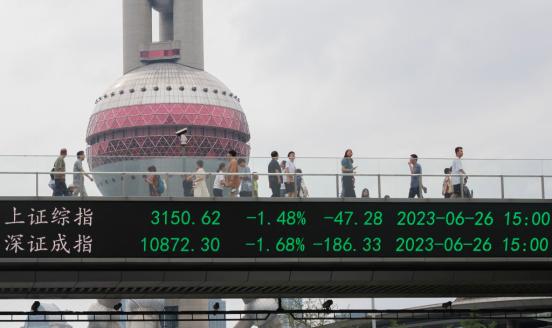The US-China trade agreement will not put an end to geopolitical risks
The agreement between the US and China should not be read so positively in Europe, especially in Germany
The reading of the global financial markets on the agreement reached between the United States and China has been positive, probably excessively, given the relatively limited size of the agreement reached. The best thing about the agreement is that it allows a truce - at least partial - in the strategic competition between China and the United States. This truce comes at a key moment for both presidents, Trump and Xi, for different reasons. Trump needs a victory while calming the financial markets before the US presidential election. Xi needs to improve investors' perception of China's economic situation to achieve growth of at least 5.7% in 2020 and, thanks to that, achieve its objective of doubling the per capita income of the Chinese population.
As expected, the agreement includes a significant volume of Chinese imports from the United States. With a total value of up to 200,000 million dollars, which includes energy, agriculture, manufacturing and services, this commitment means doubling American exports to China, which will undoubtedly mean a reduction of European exports to China in the sectors in which we compete more with the US, such as car components, airplane components, as well as chemicals.
In other words, the trade agreement between the US and China should not be read so positively in Europe, especially in Germany, which concentrates the majority of European exports to China. Additionally, in order for the trade agreement to be considered positively in Europe, it should have opened the door to major reforms in the Chinese productive sector, increasing China's growth potential, which has been declining for years.
Although the agreement reached includes two chapters on intellectual property protection and technology transfer, with measures aimed at reducing the cost of initiating an intellectual property investigation, the reality is that it does not include any reform of the Chinese productive system and, in especially, a reform of the enormous weight of the public sector in the production of goods and services in China.
The agreement, which is only interim, has been oversold by both parties and probably will not last. The differences between the two powers remain enormous, so the geopolitical risk remains intact. Most likely, this risk becomes a reality in the Middle East, and in particular Iran, given the enormous investment that China has made in this country and the risk that the US will continue trying to isolate it by putting pressure on China to disinvest in Iran.
Investors should realise that what they have been living in a fairy tale since early December, and not the geopolitical reality in which we find ourselves.




